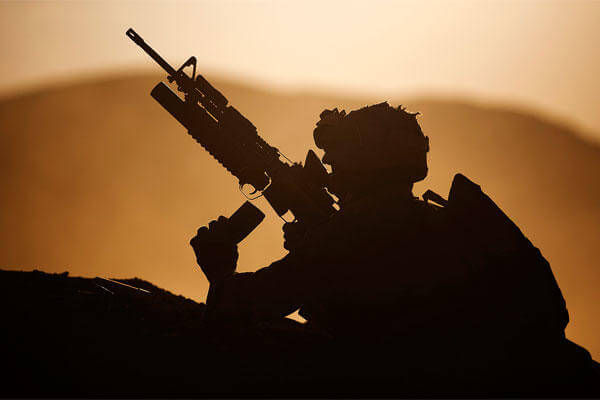After years of discussing the uncertain way forward after the wars in Iraq and Afghanistan, the Marine Corps has made a list of 14 warfighting challenges that will dictate the shape of future training and prepare the service for the next 20 years of fighting.
The challenges include items such as "special operations forces integration and interoperability," "improved individual training and education," and "employ 21st century combined arms." And each challenge comes with a detailed problem sheet explaining where the Marine Corps is, where it would like to be, and what specific obstacles need to be addressed.
All this will allow the Corps to try out new techniques and technologies during its series of semi-annual joint exercises and war games around the globe, Col. Stephen Neary, deputy commander of Marine Corps Combat Development Command, told Military.com.
"'I see this exercise, what warfighting challenges are you getting after?' 'We're getting after 4, 5 and 7,'" Neary said. "There's that alignment."
This new strategy is a key element in the Marines' Force Development Strategic Plan, a 46-page document released late last year that plots Marine Corps strategy out to 2035. It emphasizes collaboration between the Corps' planning and development divisions and harps on a "campaign of learning" that aims to get more out of the exercises and experiments the Marines have done for years.
The plan was created at the direction of previous Marine Corps Commandant Gen. Joseph Dunford, who is now the chairman of the Joint Chiefs of Staff, Neary said.
"He was trying to get after tomorrow's Marine Corps as we were getting out of Iraq and Afghanistan," he said. "We are the integraters. We need to integrate today's Marine Corps with tomorrow's Marine Corps. This allows the force to get together and move out."
Another key part of the strategy will see closer collaboration between the Navy and the Marine Corps in defining joint objectives ahead of exercises. Partnership in Naval operations at and from the sea is one of the 14 warfighting challenges, and the growing joint relationship between the services is echoed in Dunford's 2015 planning guidance and a fleet strategy released by Chief of Naval Operations Adm. John Richardson earlier this month.
"We're sort of setting up a path to explore this in a series of war games and exercises and those sorts of types of efforts that continue to go back and address these problems," Richardson told Military.com. "There's a big effort right now to understand the questions that our war games are exploring, and we've just committed to do that as a naval team."
Neary said the Marine Corps was developing a two-year experimentation plan that would streamline efforts to make the force more modern and allow Marine Expeditionary Force commanders and others in planning sectors, such as the Marine Corps Warfighting Lab and Marine Corps Combat Development Command, to have greater input.
The new strategy calls for weekly synchronization meetings, quarterly forums and reviews to discuss progress, and a semi-annual review at the four-star level. Planners envision this approach will also help the Marine Corps to make a stronger case for itself when it requests new technology, gear or funding.
"It's got to be supported by analytical rigor, so we have an unassailable Marine Corps," Neary said. "Somebody can't question why we have this requirement, why we have this widget or gadget or why we want them."
Neary said other tenets of the force development plan, including changes to individual Marine training and education and strategies to enhance and adapt the force for future fights, would be informed by a fragmentation order from Commandant Gen. Robert Neller. That document was released Jan. 19. The entire plan, he said was due to be discussed by generals from around the Marine Corps at an upcoming executive off-site meeting.
"This is no longer a night job," Neary said of the planning and coordination strategy laid out in the force development plan. "This is a day job. This is what we do."
--Hope Hodge Seck can be reached at hope.seck@monster.com.
Related Video:
Semper Fi Always Faithful






























